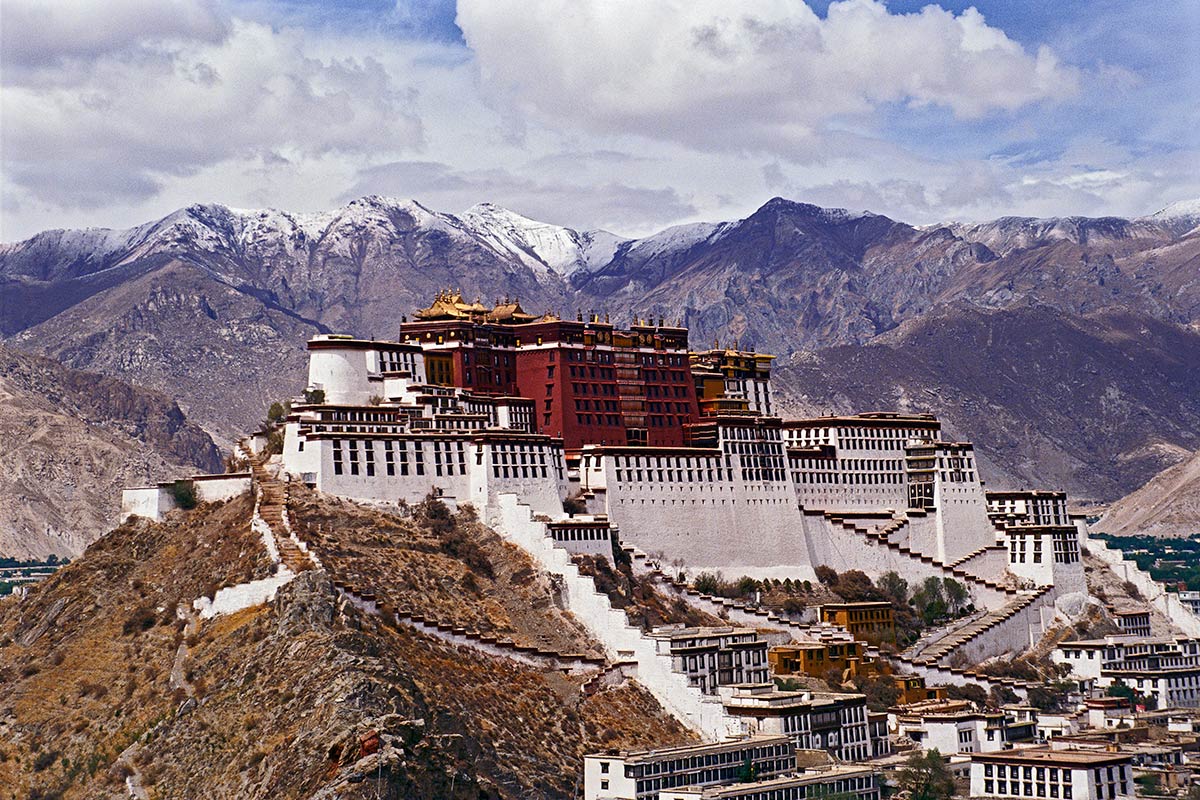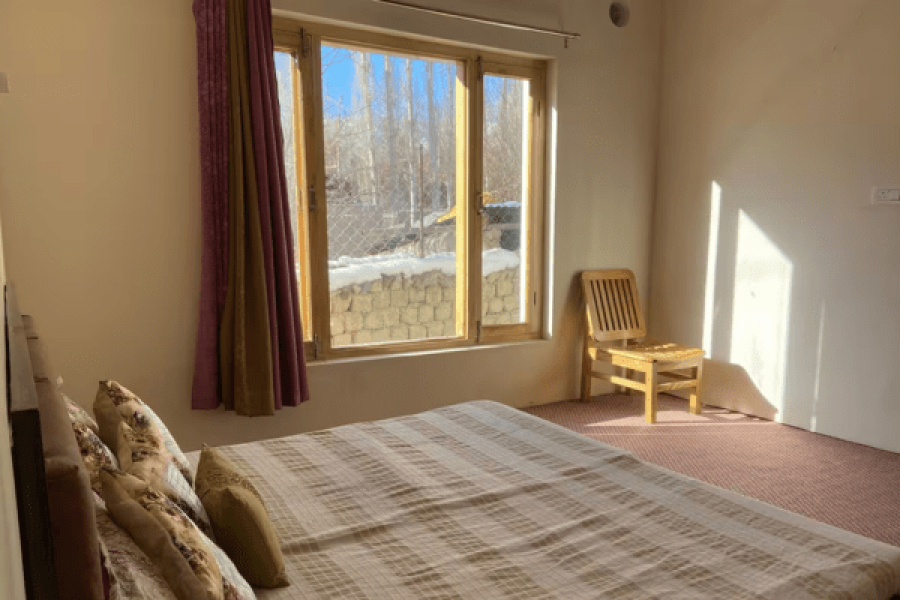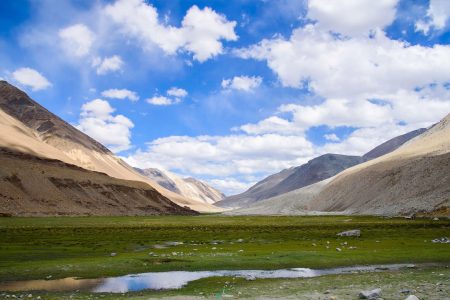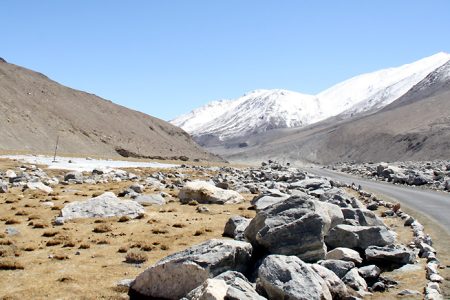Unlike dense forests or thick jungles, the beauty of Changthang lies in its stark, wide-open vistas and dramatic contrasts.
The region ranges from 4,000 to 7,000 meters above sea level, making it one of the highest wildlife sanctuaries in the world.
Features vast alpine grasslands, salt marshes, glacial-fed streams, and iconic high-altitude lakes like Tso Moriri and Tso Kar.
The sanctuary is part of the broader Changthang Plateau, which stretches deep into neighboring Tibet, fostering cross-border biodiversity.
The landscape, while seemingly barren, teems with life during the summer when meadows bloom and wildlife thrives in the short, intense season.
Designated as a sanctuary in 1987, Changthang plays a crucial role in preserving the fragile, high-altitude ecosystem of the Trans-Himalayan region. The sanctuary is part of the larger Tibetan Plateau Biosphere, making it an ecological treasure chest brimming with unique and often endangered species.
Key species you might encounter:
Kiang (Tibetan Wild Ass) — the largest of the wild ass species, known for its elegance and resilience.
Snow Leopard — the elusive “ghost of the mountains,” occasionally sighted in the more rugged zones.
Tibetan Wolf and Himalayan Blue Sheep (Bharal).
Black-necked Crane — considered sacred by Buddhists, these migratory birds breed here during summer.
Ladakh Urial — a rare mountain sheep species.
Bar-headed Geese, Brahminy Ducks, and other alpine birds at the wetlands.
This sanctuary’s blend of wetlands, alpine meadows, salt lakes, and cold deserts creates an ever-changing backdrop for wildlife observation, especially during the brief but vibrant Ladakhi summer.
One of the unique aspects of Changthang is its living cultural landscape. The sanctuary is not just about wildlife — it’s also home to the Changpa nomads, a resilient pastoralist community that herds the world-famous Pashmina goats.
Visitors can sometimes witness these nomads’ tented settlements (Rebos) scattered across the plains, offering a rare glimpse into a sustainable lifestyle deeply intertwined with the land, wildlife, and seasons.
Wildlife Spotting:
While sightings aren’t always guaranteed, patient travelers stand a fair chance of spotting Kiangs, marmots, foxes, and a variety of bird species around Tso Moriri and Tso Kar.
Birdwatching:
From late spring through early autumn, the sanctuary transforms into a paradise for bird lovers, especially at Tso Moriri Wetland Co nservation Reserve, a Ramsar site.
Scenic Drives & Photography:
The sheer remoteness and beauty of Changthang make it a photographer’s dream — especially during golden sunrise and sunset hours when the play of light on the bare mountains and mirrored lakes creates otherworldly landscapes.
Nomadic Culture Encounters:
In summer months, visitors may observe the traditional life of the Changpa herders, including their yak caravans, Pashmina goats, and circular yak-wool tents.










